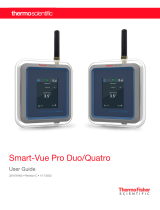
© Robert Bosch France SAS 2022. All rights reserved, also regarding any disposal, exploitation, reproduction, editing, distribution, as well as in the
event of application for industrial property rights. Data subject to change without notice. Printed in France, December 2022.
4.10 Federal Communications Commission (FCC) Notice
Product type: Parking lot sensor
Product name: TPS110 US
This device complies with Part 15 of the FCC rules and has been certified. Operation is subject to the following two
conditions: (1) This device may not cause harmful interference, and (2) this device must accept any interference
received, including interference that may cause undesired operation. The manufacturer is not responsible for any
changes or modifications not expressly approved by the party responsible for compliance. Such modifications may
void the FCC authorization to operate this equipment. NOTE: This equipment has been tested and found to comply
with the limits for a Class B digital device, pursuant to Part 15 of the FCC Rules. These limits are designed to provide
reasonable protection against harmful interference in a residential installation. This equipment generates, uses, and
can radiate radio frequency energy and, if not installed and used in accordance with the instructions, may cause
harmful interference to radio communications. However, there is no guarantee that interference will not occur in a
particular installation. If this equipment does cause harmful interference to radio or television reception, which can be
determined by turning the equipment off and on, the user is encouraged to try to correct the interference by one or
more of the following measures:
• Reorient or relocate the receiving antenna.
• Increase the separation between the equipment and receiver.
• Connect the equipment into an outlet on a circuit different from that to which the receiver is connected.
• Consult the dealer or an experienced radio/TV technician for help.
4.11 ISED Canada (IC) Notice
Product type: Parking lot sensor
Product name: TPS110 US
This device complies with Industry Canada license-exempt RSS standard(s) and has been certified. Operation is
subject to the following two conditions: (1) this device may not cause harmful interference, and (2) this device must
accept any interference, including interference that may cause undesired operation. This Class B digital apparatus
complies with Canadian ICES-003.
Le présent appareil est conforme aux CNR d'Industrie Canada applicables aux appareils radio exempts de licence.
L'exploitation est autorisée aux deux conditions suivantes: (1) l'appareil ne doit pas produire de brouillage, et (2)
l'utilisateur de l'appareil doit accepter tout brouillage radioélectrique subi, même si le brouillage est susceptible d'en
compromettre le fonctionnement. This Class B digital apparatus complies with Canadian ICES-003. Cet appareil
numérique de la classe B est conforme à la norme NMB-003 du Canada.
4.12 Note for transport
The TPS110 contains a lithium metal battery and is classified as UN 3091 (lithium metal batteries packed in
equipment, including lithium alloy batteries).
The lithium metal battery for the TPS110 complies with the requirements of the UN Manual of Tests and Criteria, Part
III, Subsection 38.3. The battery contains less than 2 g of lithium. Packages with up to 2 TPS110 and a maximum of 2
packages per shipment should not be affected by special transport regulations. For your safety, however, check with
your transport service provider. Packages with more than 2 TPS110 (for example, also for returns to Robert Bosch
France SAS) must carry a lithium battery handling label specified in the appendix.
* UN 3091
** Telephone number
The telephone number on the lithium battery handling label should be that of a person knowledgeable about the
shipment but is not intended to be for the purposes of obtaining immediate emergency response guidance, and is
therefore not required to be monitored at all times while the package is in transit. It is acceptable for the number to
be monitored during the company’s normal business hours in order to provide product-specific information relative
to the shipment. However, it also is acceptable to use an emergency response, 24-hour phone number on the
lithium battery mark. Source: guidelines for Li battery in transport included in p. 7 ‘IATA 2021 Guidance Document
– Battery Powered Cargo Tracking Devices / Data Loggers’






















